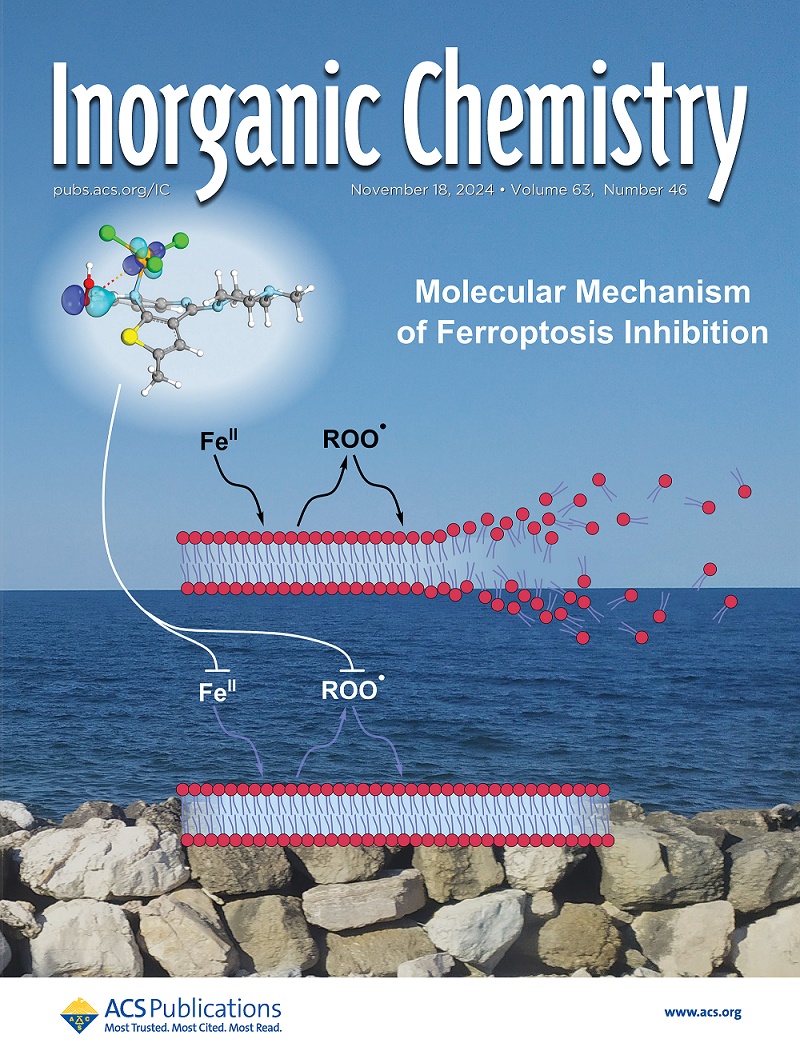Dinitrogen Binding and Silylation by Bis(ketimino)carbazolide Complexes of Iron and Cobalt.
IF 4.7
2区 化学
Q1 CHEMISTRY, INORGANIC & NUCLEAR
引用次数: 0
Abstract
We report the coordination chemistry of a bulky 1,8-bis(ketimino)carbazole (HL) ligand and the reactivity of the corresponding iron(II) and cobalt(II) chloride complexes [LFeCl] (1) and [LCoCl] (2). Upon one-electron reduction of 1 and 2 under a dinitrogen atmosphere, N2 binds to the reduced metal centers to generate the corresponding square planar Fe(I) and Co(I) complexes [LFe(N2)] (3) and [LCo(N2)] (4·N2), respectively. While further reduction of 3 generates the formally Fe(0) species [LFe(N2)]-, the reduction of 4·N2 affords a three-coordinate [LCo(0)] complex (7) with the loss of N2 from the metal center. Density functional theory (DFT) calculations suggest noninnocent behavior of the ligand. Both 3 and 4 can catalyze the silylation of N2 using the combination of KC8 and Me3SiCl reagents to produce N(SiMe3)3, where low temperature and batch addition significantly improve the yields to up to 52%.铁和钴的双(酮胺)咔唑烷配合物的二氮结合和硅基化。
我们报道了一种体积庞大的1,8-双(酮咪诺)咔唑(HL)配体的配位化学性质,以及相应的铁(II)和钴(II)氯配合物[LFeCl](1)和[LCoCl](2)的反应性。在二氮气氛下,对1和2进行单电子还原后,N2与还原后的金属中心结合,分别生成方形平面的Fe(I)和Co(I)配合物[LFe(N2)](3)和[LCo(N2)](4·N2)。3的进一步还原生成形式为Fe(0)的物质[LFe(N2)]-,而4·N2的还原生成三坐标的[LCo(0)]配合物(7),金属中心的N2损失。密度泛函理论(DFT)计算表明配体的非无害行为。3和4都可以通过KC8和Me3SiCl试剂的组合催化N2的硅化反应生成N(SiMe3)3,低温和批量添加显著提高了产率,最高可达52%。
本文章由计算机程序翻译,如有差异,请以英文原文为准。
求助全文
约1分钟内获得全文
求助全文
来源期刊

Inorganic Chemistry
化学-无机化学与核化学
CiteScore
7.60
自引率
13.00%
发文量
1960
审稿时长
1.9 months
期刊介绍:
Inorganic Chemistry publishes fundamental studies in all phases of inorganic chemistry. Coverage includes experimental and theoretical reports on quantitative studies of structure and thermodynamics, kinetics, mechanisms of inorganic reactions, bioinorganic chemistry, and relevant aspects of organometallic chemistry, solid-state phenomena, and chemical bonding theory. Emphasis is placed on the synthesis, structure, thermodynamics, reactivity, spectroscopy, and bonding properties of significant new and known compounds.
 求助内容:
求助内容: 应助结果提醒方式:
应助结果提醒方式:


